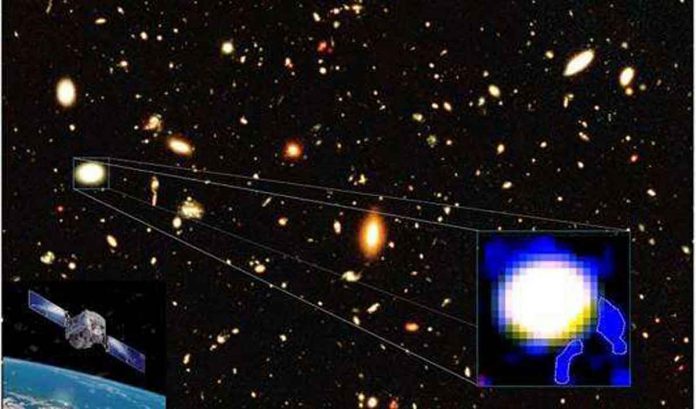An international team of researchers has observed a portion of the formation of a dwarf galaxy, which helps to explain how they progress from dwarf to mature. The group describes finding evidence of maturation in such galaxies in their paper published in the journal Nature.
Previous research has revealed the existence of dwarf galaxies in the universe. When compared to mature galaxies like the Milky Way, which have 200 to 400 billion stars, such galaxies typically have only a few billion stars. Prior research has also suggested that some dwarf galaxies may evolve into more mature galaxies, but how this occurs is unknown.
The researchers used the AstroSat space-based telescope to focus on several blue compact dwarf galaxies that are estimated to be 1.5 to 3.9 billion light-years away from Earth. The team then searched for evidence of star formation activity using the ultraviolet imaging telescope aboard AstroSat, India’s first multi-wavelength space telescope.
Previous efforts to observe star formation in dwarf galaxies were hampered by their low luminosities, small size, and low mass of the objects contained within them. These issues were overcome with AstroSat due to its high resolving power, ability to capture multiple wavelengths of light at the same time, and also because it was outfitted with UV deep field imaging technology.
The researchers discovered evidence of material moving from the outer edges of eleven dwarf galaxies inward toward the centre after analysing 17 hours of AstroSat data. According to the researchers, such accretions would result in a buildup of material in the inner parts of the galaxy, which could lead to the formation of stars and other bodies such as planets and moons. They also believe that such material is being drawn inward by torque from gas and stellar complexes.
The researchers believe their findings are only the first step toward understanding how dwarf galaxies evolve into mature galaxies with many more stars.

